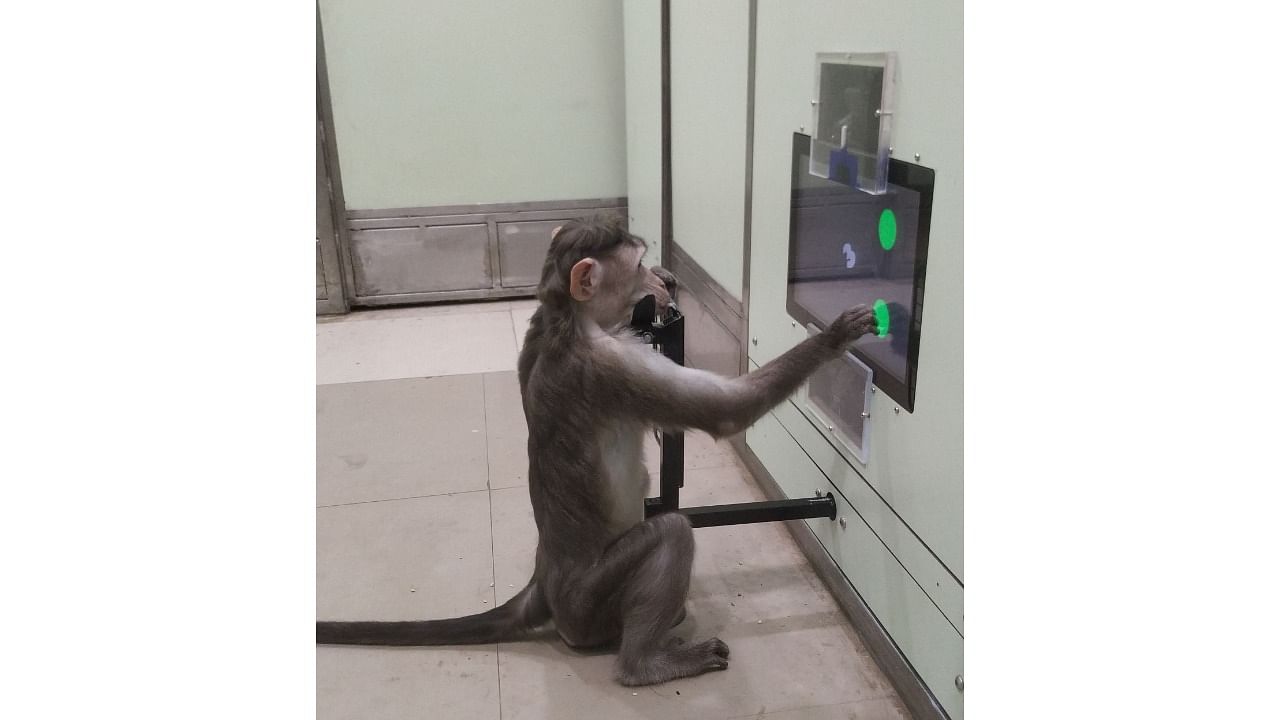
Bengaluru-based neuroscientists have trained macaque monkeys to carry out complex cerebral tasks on a touchscreen while placed inside a room, opening a new window to study animal behaviour and cognition.
Traditionally, such experiments are carried out by restraining the animal to a seat, but the Indian team followed a different approach as they decided to let the animals move freely inside a room and aid them to operate the touchscreen in a natural environment. "In our new lab, monkeys can move freely in a large natural space, and also access a touchscreen workstation where they can be trained to perform complex tasks," said SP Arun, an Indian Institute of Science professor, who led the team.
The monkeys live inside a "naturalised" room with logs, trees, perch and ropes. During the experiments, Arun and his colleagues at the Centre for Neurosciences bring the animals to an attached 'behaviour room' through a 'squeeze partition'.
Inside the behaviour room, the monkeys were first taught to touch the screen to get a reward, then hold the screen and finally to touch a button after showing an image. The reward was fruit juice, which they could sip from a pod.
Painstakingly, the researchers also taught the monkeys to operate the touchscreen sitting on the floor with the help of a pole and a chin-rest.
As an example of what is possible, the scientists trained two monkeys to perform a "same-different" task. This is a fundamental cognitive task that humans do all the time — to decide whether two things are the same or not.
The researchers took nearly three months to train the first two animals, M1 and M2, who learnt the ropes through a trial-and-error method. Subsequently, the IISc team employed the trained duo to teach two naive ones.
"We did the training in a controlled way. First, the trained animal was brought to the behaviour room. Then, we inserted an untrained one so that it can see what the other one was doing and learn. Finally, we left the untrained animal alone in the room," said Georgin Jacob, the first author of the study and a researcher at the IISc centre.
By Day 5, M2 had learned the basic task structure. By Day 9, it was performing at chance and by Day 21, the monkey had learnt the same-different rule. "The social training reduced the training time to three weeks from three months," Arun told DH.
The researchers will use the monkey experiments for a better understanding of human brain functions, particularly perception. Understanding the brain remains one of the biggest challenges in scientific research all over the world and monkeys are used in many such cutting-edge experiments.
One of the challenges for the IISc scientists was how to do the eye-tracking of the animal to know if they are staring at the image shown on the screen or looking at other parts of the screen. "We saw that monkeys bring their head to the same position each time to drink juice. So we developed modular head/chin supports to stabilise their head. This and our custom eye-tracker setup gave us great gaze signals," Arun said.
They obtained remarkable gaze tracking from the two animals even though the monkeys were unrestrained and freely engaging with the touchscreen or moving away at their own will.
"We show that two naive monkeys were able to learn such a complex task through a combination of socially observing trained monkeys and through solo trial-and-error. We propose that such naturalistic environments can be used to rigorously study visual cognition as well as other natural and social behaviours in freely moving monkeys," they reported in the journal eLife.
Watch the latest DH Videos here:
